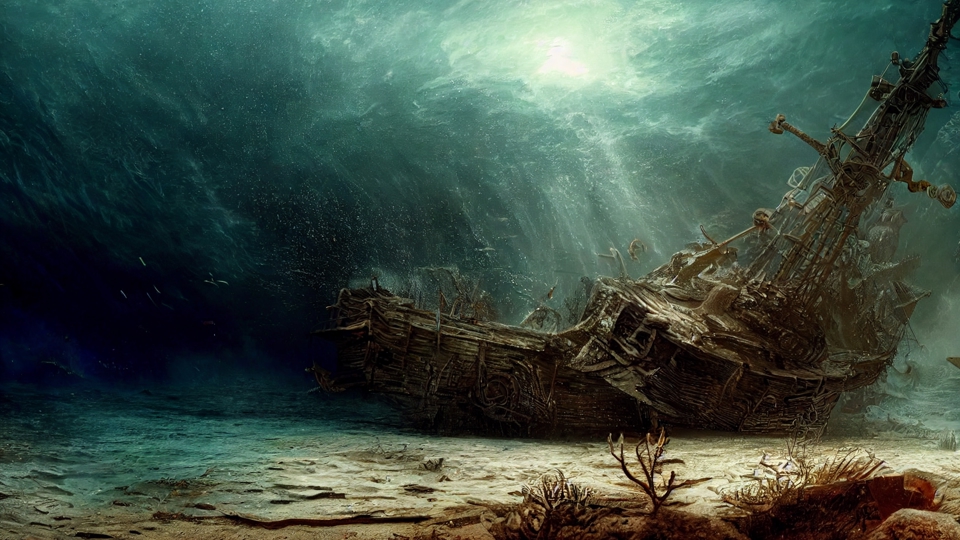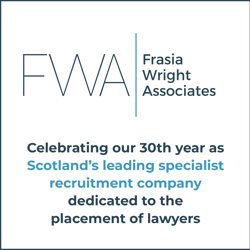When ships crash at sea — Maritime law and a collision between the Solong and Stena Immaculate

Dr Leon Moller, expert in maritime law, examines the legal issues arising from the collision between the Solong and Stena Immaculate.
Background
When two foreign-registered ships crashed in UK waters causing the loss of a life, extensive damage to both ships and the spillage of aviation fuel into the North Sea, several questions relating to responsibility and liability aspects were raised. The collision between the Solong (container ship) and the Stena Immaculate (oil tanker) took place on 10 March 2025 close to the Humber Estuary, along the east coast of England. The Solong is registered in Portugal and the Stena is registered in the US. The captain of the Solong was arrested and charged with negligence and manslaughter.
The North Sea is an established shipping region and since the 1960s has evolved into a major oil- and gas-producing area, with many offshore installations and vessels – and most recently offshore energy (wind) installations – distributed over large marine areas between the UK and Europe.
As a coastal state, the UK has jurisdiction over all offshore marine activities within the country’s maritime boundaries. However, incidents involving foreign-registered ships raise pertinent questions on the potential conflict of jurisdiction because of the ship nationalities, and the roles (rights and responsibilities) of the foreign countries where the ships are registered. These questions are addressed under maritime law, with useful lessons from similar incidents.
Maritime law and jurisdictional implications of ship collisions
a. Maritime law and the law of the sea
Maritime law is a specialised area of law that deals with many complex aspects to do with the use of the sea, including the relevant legal rules and regulations that are based on contract law, tort law, law of agency, insurance, arbitration and dispute resolution. It forms part of private international law, which governs the arrangements and relationships between private individuals and entities who are owning, controlling, operating and using sea-going vessels, covering activities such as carriage of goods by sea, collisions, salvage, general average and marine pollution.
Maritime law also overlaps with public international law, including international conventions adopted for the regulation of the use and governance of the sea, and which are applicable to signatory and member states such as the UK.
The United Nations Convention on the Law of the Sea (UNCLOS), 1982, is the main convention that governs the regulation and use of oceans, and bestows control and enforcement jurisdiction on member states (ie coastal state and flag state jurisdiction). The UK acceded to UNCLOS on 25 July 1997.
Additionally, several International Maritime Organization (IMO) conventions apply directly to shipping, navigational safety and marine pollution in the UK, including the International Convention for the Safety of Life at Sea (SOLAS), 1974; the Convention on the International Regulations for Preventing Collisions at Sea (COLREGs), 1972; the International Convention for the Prevention of Pollution from Ships (MARPOL), 1973, which covers the prevention of pollution of the marine environment by ships from operational or accidental causes; and the International Convention on Standards of Training, Certification and Watchkeeping for Seafarers (STCW), 1978.
b. Coastal state jurisdiction
The collision between the Solong and Stena Immaculate took place in the North Sea, well within the confines of the UK’s coastal waters, and therefore falls under the scope of the UK’s maritime law (which consists of both international and national law). As a coastal state, the UK’s national jurisdiction extends over several maritime zones created under UNCLOS.
These zones which are relevant to ship collisions are: the territorial sea of 12 nautical miles (nm), where the UK exercises the same rights of sovereignty as those which it possesses over its land, internal waters and ports; the contiguous zone of 24nm, which provides limited authority, where the UK enforces specific national laws relating to customs, taxes, immigration and sanitation; the exclusive economic zone of 200nm, which bestows sovereign rights on the UK to regulate the management, exploitation and utilisation of natural resources (ie fishing, oil and gas activities) and other economic activities.
These zones form part of the English Channel and the North Sea, which have become extremely busy shipping lanes with over 500 vessels passing through daily. Linking the UK and continental Europe, they also provide an essential gateway to the Atlantic and Arctic Oceans and to wider global markets.
The problems caused by the increasing frequency of collisions in the English Channel are well known, and have been highlighted by many – including Bowett in his 1971 article, The English Channel, Collisions and Coastal State Jurisdiction: A Tentative Proposal.
Additionally, the likelihood of marine incidents involving ships and North Sea offshore energy structures, including offshore installations and wind farms, is a real concern. According to the North Sea Transition Authority (NSTA), more than 290 offshore installations, 250 subsea systems and thousands of miles of pipelines are located on the UK Continental Shelf, within a total of over 1,350 offshore installations in the North-East Atlantic Area.
As a coastal state, the UK’s Marine Accident Investigation Branch (MAIB) has authority to investigate all maritime incidents and accidents in UK waters, including ship collisions. The MAIB investigations focus mainly on ascertaining the causes and circumstances of incidents with the main objective of preventing future accidents.
The MAIB investigation of the Solong collision focused on the navigation and watchkeeping practices of each vessel, manning and fatigue management, the condition and maintenance of each vessel, the location of anchoring and the environmental conditions at the time of the accident. The MAIB investigations do not examine issues of liability and apportionment of blame, which are generally left to the admiralty jurisdiction of the courts. As reported, soon after the collision, the Russian captain of the Solong was arrested and charged with gross negligence manslaughter.
To prevent collisions between ships and installations in the North Sea, the Health and Safety at Work etc Act 1974 (Application outside Great Britain) Order 2013 (AOGBO) extends UK jurisdiction to offshore installations and vessels involved in oil and gas operations, and requires the adoption of collision avoidance and protection measures based on current good practice. It is the responsibility of the ship’s captain and relevant seafarers to ensure the necessary processes and systems are in place to protect the safety of people on nearby installations, as far as is reasonably practicable.
The Health and Safety Executive (HSE) regulates the UK’s offshore oil and gas industry through several offshore safety regulations. Most of the current regulations applying to oil and gas installations and vessels were adopted as a direct result of the 1988 Piper Alpha Disaster when 167 people died after a gas explosion on the installation.
c. Flag state jurisdiction
The Solong is registered in Portugal and the Stena Immaculate is registered in the US, meaning that the jurisdiction on board these vessels is dictated by Portuguese law and US law, respectively. Both flag states are responsible for ensuring the safety of their ships through regular inspections and training of the seafarers on board so as to ensure compliance with international rules on collisions and safety of navigation. Portugal and the US are the flag states of the vessels.
What is a flag state? The issue of flag state jurisdiction would be of great importance in this ship collision, because the nationality of the vessel is based on the flag of the country where it is registered. The ship will be subject to the exclusive jurisdiction of the flag state, which includes legislative and enforcement jurisdiction over its ships on the high seas.
UNCLOS established several flag state rules including Responsibilities, Duties of Flag States, Status and Nationality of Ships, and the Prevention, Reduction and Control of Marine Pollution. Article 91 provides for the nationality of ships, in that every state shall fix the conditions for the grant of its nationality to ships. Ships have the nationality of the state whose flag they are entitled to fly.
Part XII of UNCLOS obliges flag states to ensure that vessels flying their flag comply with applicable pollution prevention laws and regulations and must provide effective enforcement, including the prevention of vessels from sailing if they are not in compliance with such rules.
Flag states must also ensure their ships carry the necessary statutory certificates as evidence of compliance with pollution prevention rules and must carry out periodic inspections to “verify that the certificates are in conformity with the actual condition of the vessels”. Flag states are required to have the necessary financial and technical capabilities to ensure compliance with all applicable regulations from the IMO.
The flag state has several duties under international conventions for safety at sea, and also the prevention of marine pollution. Flag states are required to implement and enforce all these international maritime regulations on their ships, such as the COLREGs, MARPOL and SOLAS. These conventions have been ratified by the US, Portugal and also the UK. Under MARPOL, flag states must preserve and protect the marine environment, and under the COLREGs, flag states must ensure compliance with the regulations on navigational safety.
As Robles put it, in Vessel Collisions in the Law of the Sea (2022), once a state has accepted the rules, it is their duty to give effect to them. Not all flag states are so successful in regulating their registered ships and ensuring compliance with relevant international conventions and their own national maritime laws. Corres and Pallis, in their empirical analysis of flag state performance, highlighted the responsibility of flag states over the performance of their registered vessels in terms of safety and environmental protection. Maritime safety depends not only on the ability of the shipowner and captain but also the flag state to carry out their responsibilities effectively.
Lessons from ship collisions
Ship collisions can be catastrophic, with major damage to the ships involved, the loss of lives, and considerable marine pollution with disastrous consequences to the marine ecosystem. The following examples highlight several lessons from the failure to comply with the COLREGs (ie failure of navigational safety and watchkeeping practices, absence of a proper lookout, insufficient training and bad weather conditions).
- Ship collision on 25 April 2024 between the Greece-registered oil tanker Apache and the UK-registered fishing vessel Serinah, which resulted in the sinking and loss of the Serinah in the Firth of Clyde, Scotland.
- North Sea collision on 24 October 2023 between the Isle of Man-registered general cargo vessel Verity and the Bahamas-registered bulk carrier Polesie, resulting in the sinking of the Verity with the loss of five lives.
- The world’s worst oil tanker disaster in recent times is that of the collision between the Panama-flagged Sanchi, an oil tanker, and the CF Crystal, a Hong Kong-flagged bulk carrier, on 6 January 2018 off the coast of Shanghai, China. The tanker carried 136,000 tonnes of natural gas condensate (highly flammable), and the collision resulted in a fire and explosion and a large oil spill. The tanker burned for more than a week before it eventually sank on 14 January 2018. All 21 crew from the CF Crystal were rescued, but all the Sanchi’s 32 crew died. The investigations involved maritime authorities from Iran, China, Hong Kong and Panama.
Judicial responses to ship collisions
In England and Wales, ship collision cases are held in the Admiralty Court, and in Scotland, the Scottish courts have jurisdiction to hear “admiralty actions” including ship collisions in Scottish waters.
It will ultimately be for the courts to establish negligence on the part of the captain or the crew of the colliding vessel, the Solong, which crashed into the Stena Immaculate. The captain of the Solong was arrested on charges of gross negligence manslaughter. He pleaded not guilty. The owners of the Solong also filed a legal claim against the owners of the Stena for contributory liability to the incident, which is the usual process for large maritime casualties and a way of reaching an eventual settlement.
In cases where two or more vessels are involved, the court’s role is to determine “the proportion to the degree in which each vessel was in fault”. The court will inevitably consider reports by the MAIB, and the Maritime Coastguard Agency (MCA) guidance on navigational safety practices. The MCA guidance provides details on how to correctly use the COLREGs to determine risk of collision and to take the correct avoiding action. The officer on watch is ultimately responsible for ensuring compliance with the COLREGs.
The preliminary investigation by the MAIB into the Solong and Stena collision indicates that the master of the Solong was the lone watchkeeper on the bridge, despite requirements for a dedicated lookout at night and in foggy conditions – whether that constituted negligence will be for the courts to eventually decide.
It is not always easy to determine contributory negligence and apportionment of liability between all involved vessels, and therefore collision cases can take a long time before final resolution. On 14 June 2019, a Singapore flag state container vessel, X-Press Mahanada (XPM), collided with the Burgan, a product tanker with a Kuwaiti flag, at the Bangladesh port of Chattogram. The case eventually reached the Admiralty Court in London on 29 October 2024, and the final judgment was given on 26 March 2025.
The decision focused mainly on the issues of negligence and the apportionment of liability, and the court held that the Burgan was predominantly at fault for the collision due to her failure to navigate correctly within the channel and to maintain a proper lookout or react correctly to the situation.
Conclusion
Ship collisions such as that between the Solong and Stena Immaculate highlight several common causes relating to navigational safety, manning and fatigue management, maintenance of vessels and the environmental conditions during collisions. Several international regulations provide necessary guidance to ship operators, but compliance alone is not enough to avoid incidents. Careful navigation is required in very busy shipping zones such as the North Sea.
For many decades the North Sea’s oil and gas fields have contributed to the energy needs of the region. However, with the winding-down of the hydrocarbon sector, a renewed focus has been placed on energy transition and the development of the region’s offshore wind resources, and new offshore energy installations are being installed at a fast rate. The whole North-East Atlantic region has indeed become a crowded place with the high level of shipping and offshore energy developments.
Ships are further required to comply with MCA guidance on the use of modern technology on board vessels and remotely operated unmanned vessels (ROUVs), which present the latest risks and challenges to navigational safety in the North Sea. Ship operators and mariners, including the captain and officer of the watch, should always be on extra alert as the number of ships and marine traffic globally is growing constantly, which increases the risks for more incidents in the future.
Comprehensive understanding and application of the national and international collision regulations is paramount to ensuring safety of navigation and to avoid collisions such as that between the Solong and Stena. As Joseph Conrad wrote in The Mirror of the Sea (1906), “Ships are all right; it’s the men in ’em…”.
Written by Dr Leon Moller, expert in maritime law. A version of this article first appeared on the Robert Gordon University School of Law & Social Sciences Blog on 20 June 2025. Original citation: Moller, L. (2025) When ships crash at sea: legal issues arising from the collision between the Solong and Stena Immaculate, SLSS Research Blog (RGU), 2025/06.






